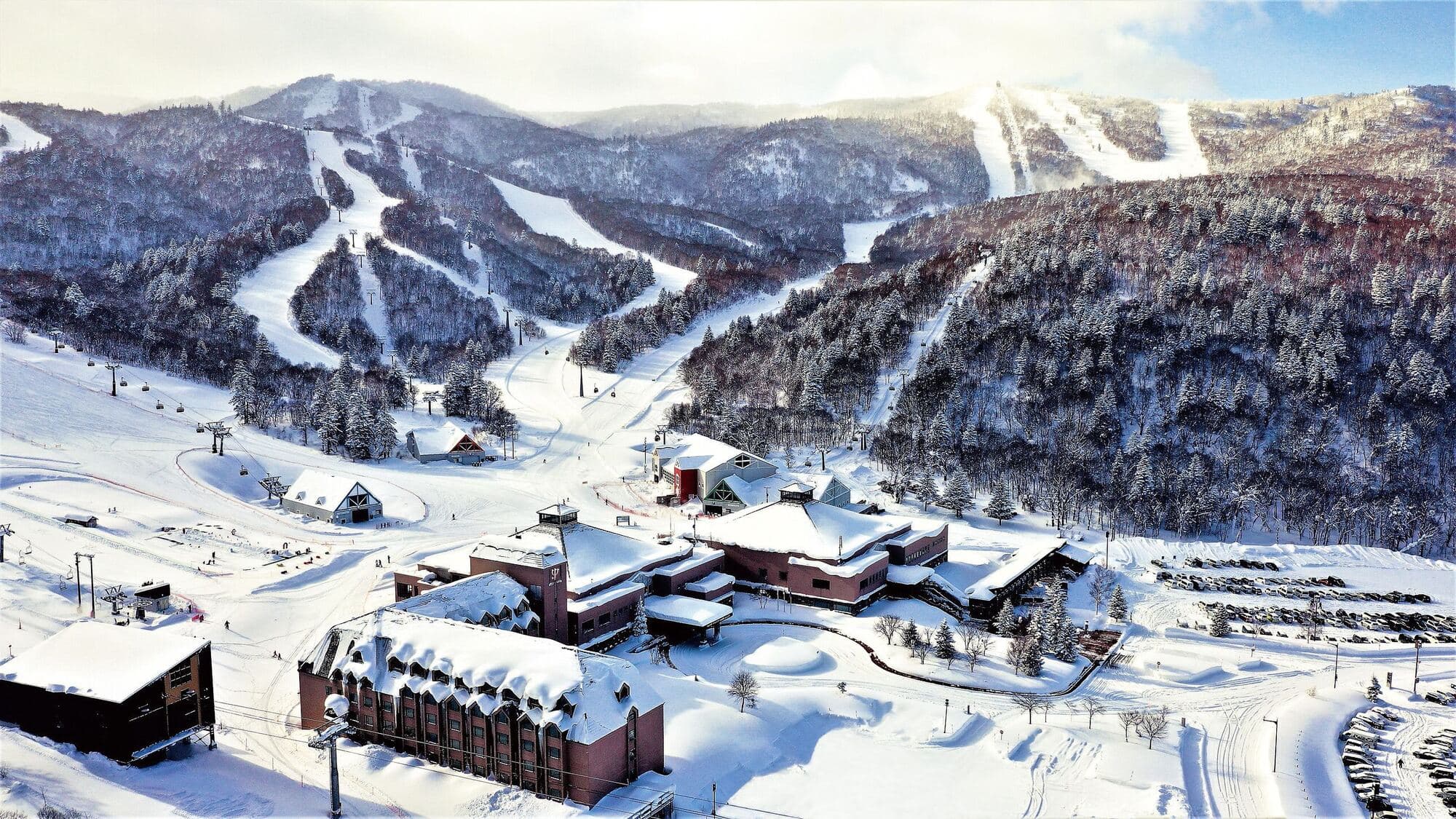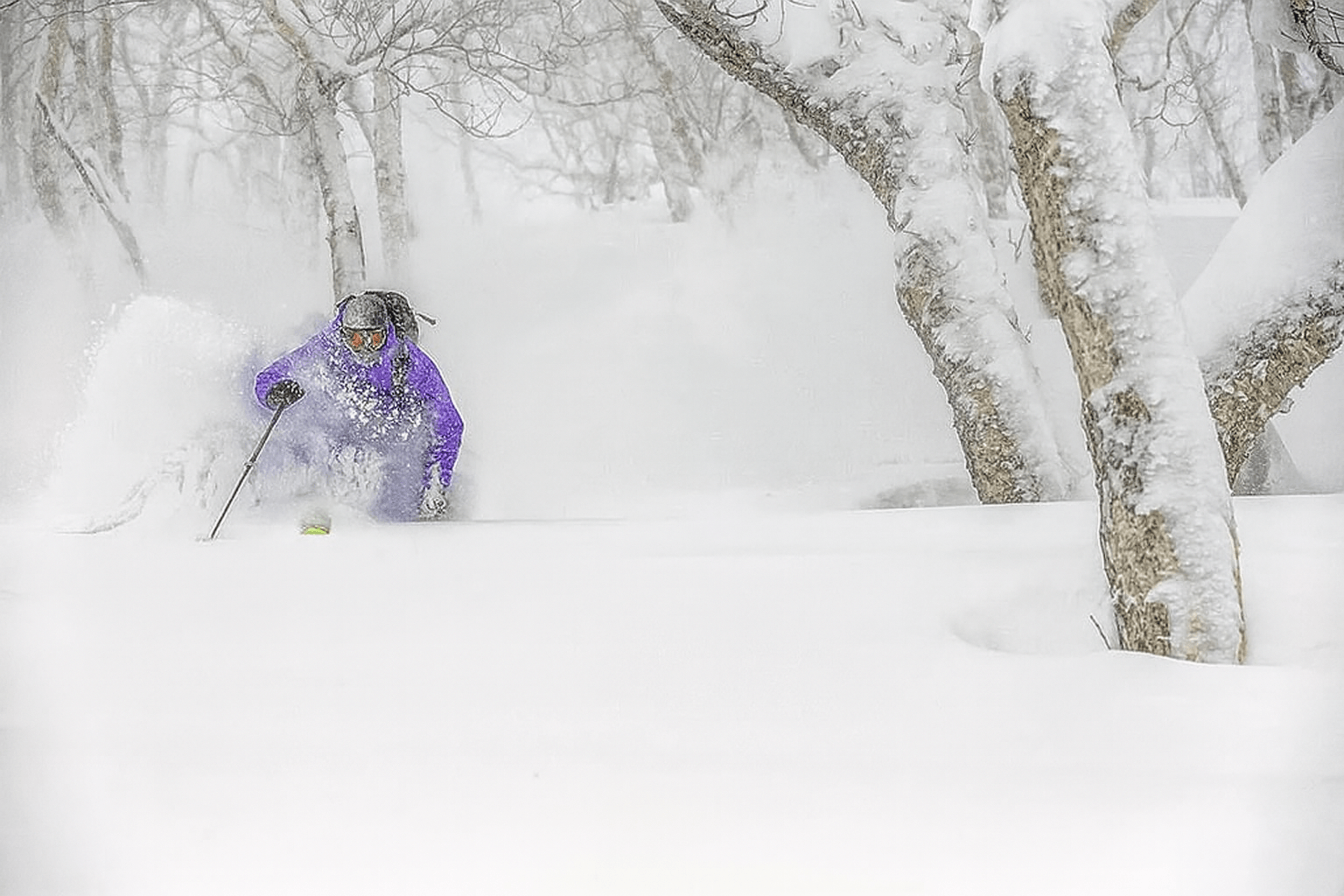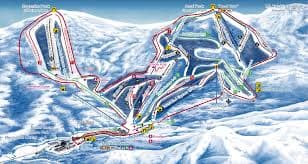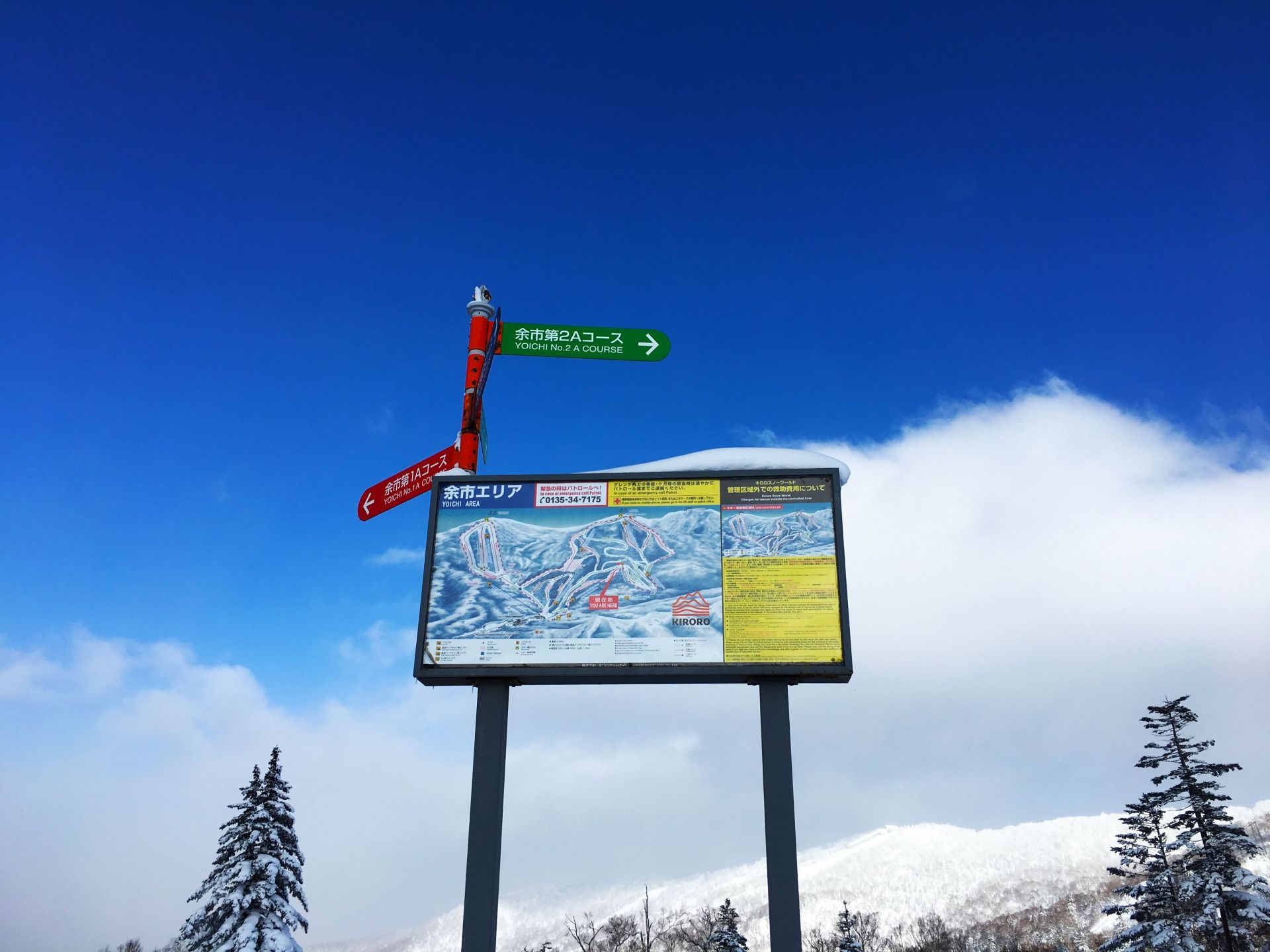Kiroro
Hokkaido’s Snow Tank

キロロ
Five-star flakes, zero fuss
Kiroro sits in that sweet spot west of Sapporo where Sea-of-Japan storm trains slam into cold inland air and unload. The result is a resort that feels purpose-built for soft-snow hunting: two peaks, quick lifts with storm hoods, and long, rolling fall lines framed by well-spaced birch. The vibe is polished — think ski-in/out condos and convenient base amenities — yet the mountains still deliver that quiet Hokkaido magic when the clouds lift.
Once upon a time Kiroro flew under the radar; those days are gone. With new slope-side beds and international awareness rising, lift-access powder disappears faster after rope drops, especially on weekends and holidays. The upside is dialed infrastructure, efficient operations, and English-speaking staff across ski school and guest services — so first-timers in Japan won’t feel adrift.

On-piste, Kiroro is friendly rather than frightening. Groomers are smooth, blacks are confidence-builders rather than leg-breakers, and you’ll find mogul lines to test your thighs. But the real reason pow chasers come is between and beyond the runs: glades that keep refilling, short tours beyond the gates, and bowls that stack snow like pastry layers. On storm days, the hooded chairs let you keep harvesting while the ridge winds tussle the top.
Practicalities: Kiroro is an easy add-on to a Niseko, Otaru or Sapporo trip, reachable from New Chitose Airport by bus or train-plus-bus in roughly two hours. Prices for lift tickets, private lessons and on-site dining are on the premium side — you’re paying for seamless logistics and cushy lodging — but the “snow per hassle” ratio still pencils out beautifully.
Resort Stats
- Vertical610m (1180m → 570m)
- Snowfall~20m
- Terrain 30% 35% 35%
- Tree Riding
- Lift Pass$48
- Lifts1 gondola, 3 quads, 5 chairs
- Crowds
- Out of BoundsAllowed via gates
- Night Skiing
- Family Friendly
- Trails23
- Skiable Area~400ha
- VibePowder-drenched, calm, seriously Japanese
Trail Map

Powder & Terrain
Kiroro’s snow quality is the headline: cold, dry, and startlingly consistent. Storms roll in off the Sea of Japan and stack up against Asari and Nagamine, laying down silky, supportive powder that skis lighter than it looks on the stake. When it’s firing, you’ll float from top to bottom with that weightless, whispery feel that spoils you for everything else. The in-resort blacks won’t humble big-mountain chargers, but the pitch is perfect for surfing fresh snow, and grooming stays on-point between systems.
The lift layout is tailor-made for storm cycles. The base chondola ferries you efficiently to the main hub, and a network of detachable, hooded chairs lets you yo-yo protected tree lines while the weather resets the upper mountain. When winds crank, the upper lifts and the gondola can go on hold — part of the Kiroro deal — so plan A becomes lapping the hoods in the trees, where visibility, shelter and snow quality hold up.

Tree skiing is Kiroro’s calling card. Lines thread through well-spaced birch with intuitive fall lines and clean exits back to the lifts. The resort embraces managed off-piste and sidecountry; use the designated gates to sample out-of-bounds stashes, and if you’ve got skins, short tours open bowls that hold cold snow days after a dump. The lower backcountry gate near the top of Gateway Express is a classic launch — just respect closures, carry the full kit, and know your exits.
Crowd factor is best described as moderate. Powder-day Saturdays see a noticeable uptick (especially with the slope-side hotels), but Kiroro still compares favorably to Niseko for line length and how fast terrain saturates. Hit first chairs, work the trees while everyone warms up on the groomers, and you’ll bank a morning of fresh turns before things get competitive. Midweek, it’s not uncommon to find soft pockets well into the afternoon.
Local tips: Start with the hooded chairs when the ridge is gusty; on calm days, ride high for longer shots and clearer views. After an overnight dump, prioritize the Nagamine trees for protected lines, then sneak toward Asari once patrol gives the thumbs-up. If you’re new to the sidecountry maze or the snowpack is spicy, hire a guide for a day — you’ll learn the safe entrances and exits, plus the spicy-but-smart options when visibility tanks.
Who's it for?
Powder-motivated intermediates to advanced riders will love Kiroro’s tempo — quick cycles, forgiving pitches, and trees that make you feel like a hero. If you want extreme steeps or long, technical couloirs inbounds, you may feel undergunned; but if you’re game for short tours beyond the gates, Kiroro becomes a very different mountain. Families and first-timers also do well here thanks to English-friendly services and a tidy base, though value-seekers should budget for premium pricing.
Accommodation
Ski-in/ski-out is the stress-free play. Yu Kiroro anchors the slope-side condo scene with spacious apartments, onsen access, and a quality in-house restaurant — perfect for families or groups who want a kitchen and a quiet night. You can roll out of bed, click in, and be on the first chair without touching a shuttle.
If you prefer everything bundled, the all-inclusive hotels at the base deliver transfers, lessons, kids’ clubs and predictable costs. It’s “fuss-free” powder chasing that works especially well for mixed-ability groups or anyone who doesn’t want to think about logistics once they land.
On a tighter budget or chasing a more local vibe? Base in Otaru and day-trip. You’ll find a stack of comfortable business hotels and pensions at friendlier prices, canal-side evening strolls, and excellent seafood — then a straightforward morning drive or bus up the valley. It’s a great way to balance premium snow with sensible spend.
Food & Après
On-mountain dining is efficient and warming — ramen, curry, and rice bowls that turn around quickly so you can get back to the goods. At the base hotels you’ll find everything from buffets to proper sit-down menus, plus café nooks for a mid-afternoon caffeine hit. The après scene stays mellow — think onsen, a bit of live music on busier weekends, then early nights for early chairs.
If you’ve got wheels, make an evening run to Otaru. The old canal district is close enough for dinner missions, and the seafood is a standout. It’s not clubbing central, but for good food and a walk in a pretty harbor town, it hits the spot.
Getting There
Closest airport: New Chitose (CTS). Typical routes: direct winter buses to Kiroro, or train to Otaru and a 30–50 minute bus or taxi up the valley. From Sapporo city, plan around 90–100 minutes by bus or roughly 70 minutes by car in good conditions. Resort shuttles run through the season; check schedules if you’re landing late. Winter driving here is very doable, but roads can glaze over — snow tires are non-negotiable, and carry chains if you’re venturing beyond main highways.
Japow Travel Tips
- Lift hours: Typical day operations around 09:00–16:15; night skiing is limited in scope and dates.
- Wind holds: Upper lifts and the gondola can pause in big blows — have a tree-day plan.
- Backcountry: Use the resort gates, carry beacon/shovel/probe, and know your exits; a submitted tour plan is recommended.
- Weather rhythm: Sea-of-Japan paths bring frequent refills; ridge winds can be an issue while improving tree quality.
- Language & services: Signage and staff are English-friendly; kids programs and lessons are well set up.
- Nearby: Day-trip options include Sapporo Kokusai, Sapporo Teine, Moiwa, and Niseko for weather chasing.
Verdict: Kiroro = Quiet Colossus of Powder
If you’re chasing dependable Japow with minimal faff, Kiroro delivers — fast hoods, forgiving fall lines, and honest-to-goodness tree skiing that keeps you coming back for “one more run”. Weekdays can feel like your own private powder party; weekends need a touch more strategy. It’s not the steepest show in Hokkaido, but line for line, storm for storm, Kiroro is one of the most repeatable good-time bets in Japan.